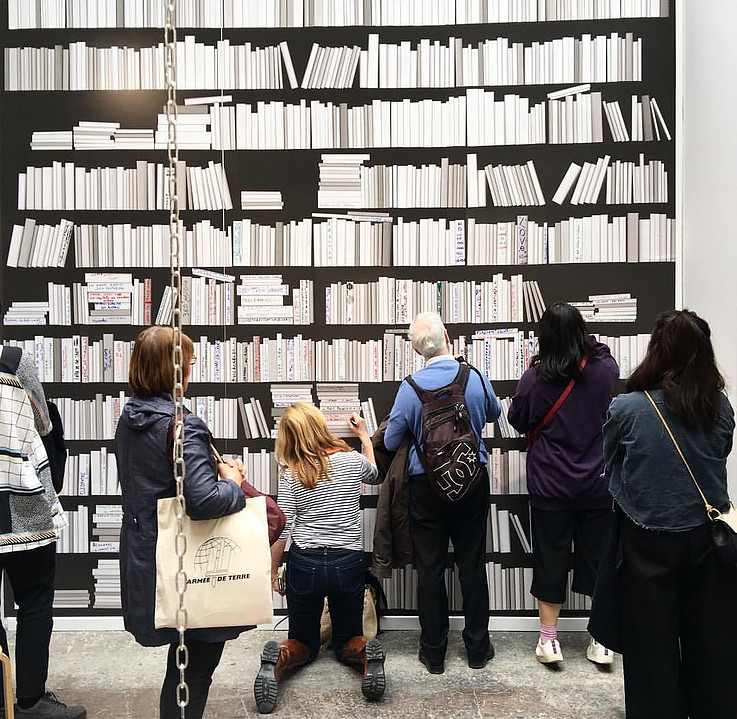I Don’t Think Art Has To Reach Out For Something Big. Jaro Varga In Conversation
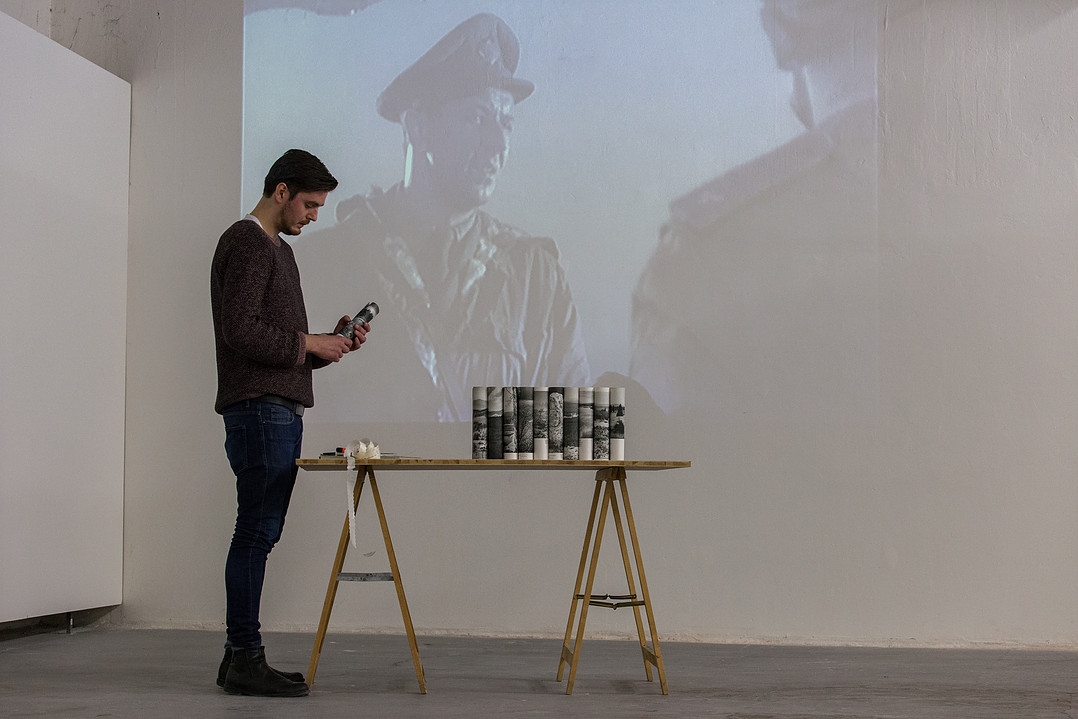
Matěj Forejt: Last month you realized an exhibition at Kabinet T, Zlín (CZ), where Dorota Kenderová was involved, too. In terms of this exhibition were you an artist or a curator?
Jaro Varga: That’s a good question, a little of both. I was invited by Lenka Tutschová, the director of Gallery Kabinet T to create an exhibition in Zlín. And I also had the opportunity to invite another artist to work with. I decided to invite Dorota Kenderová because as curators we have collaborated since 2007. But we hardly ever had the opportunity to collaborate as artists.
There’s also another question: When do you need a curator? I don’t think an artist always needs a curator – mainly in a situation when two authors have a very clear vision how to work with the space, can fulfill it with a content and also write their own accompanying text. I, as a curator, appreciate artists who can also provide their own textual contribution. It can bring another angle to the work and opens it for a very specific reading.
My very first question wasn’t at all accidental because you cannot be categorized either as an artist nor as a curator. Your work is situated somewhere in between. Therefore I would like to ask you if there are some boundaries between the role of an artist and a curator.
It is more an institutional question and I probably cannot really answer it completely. The difference between the artistic work and the curatorial one can be in methodology, tools of expression, and also in turning on and off different parts of brain. And definitely, in the distribution of power. There was a student who thought that there is one Jaro Varga, an artist, and another Jaro Varga, a curator. She thought we were two different people!
I’ve studied as an artist at the Academy of Fine Arts and Design in Bratislava and I am active as an artist until today. However, to the point why I started to work also as a curator: Back then there was a lack of alternative spaces in Bratislava to invite people for discussions or to work together. On invitation of Dorota Kenderová I joined HIT Gallery. Since 2007 we have run it together. Artist run space became a great platform or laboratory for elaborating new topics and share ideas with other artists. It was an interesting experience for me. I was actively involved in discussions about each project from the concept to the realization. I initiated and curated many exhibitions within the last 12 years of HIT Gallery – from curator as an author of whole conception to curator providing just service to an artist who doesn’t want to let the curator influence the choreography of the exhibition. Or curator as a colleague for dialog. I think the curator should sense an artist’s needs and shouldn’t be too authoritative and expansive. “Artist’s ego” plays also a big role in how collaboration will work and it finally defines your position in it. My curatorial work culminated between 2015 and 2017, when I was responsible for the overall program of Gallery MeetFactory in Prague. But what is more important, nowadays in global capitalism, I think, we should rethink the position of the curator as well as rethink the position of the artist, mainly from the perspective of a distribution of power.
When do you need a curator? I don’t think an artist always needs a curator – mainly in a situation when two authors have a very clear vision how to work with the space, can fulfill it with a content and also write their own accompanying text.
You are explaining how your artistic experience influences your curatorial work. Does it work also in the opposite direction? Can your curatorial experience help you rethink your artistic work?
Yes, I think so. When I was just an artist, or when I was an artist (laughter), without the curatorial experience most of my art projects were research based. I used the tactics and the form of research as an artist practice. The more I worked as a curator, which involves a lot of cognitive work, the more I exempted my work from a strictly considered form. I implied coincidence, spontaneous gesture, since I was full of cognitive accuracy my artistic work became more as an open form. However, it’s naturally linked together.
When I looked at your portfolio I was thinking if the curatorial work couldn’t be for an artist just different form or an extension of the artistic work…
Definitely, I’ve opened the same topics as a curator as well as an artist many times. And I can provide an example: in 2015 I co-curated the exhibition The Portent of Light (Tušení světla) with Lucia Tkáčová in MeetFactory. Now, we are preparing a publication called The Portent of Light that is inspired by the lost and never published book by Ludvík Souček. We speculate about its content and we try to reconstruct it from our artistic view. As an artist, I rarely cooperate with another artist, although now I’m constantly talking about cooperation (laughter)…
The exhibition The Portent of Light is something I would like to ask about. Although I haven’t seen it, from texts and photos I have a feeling that it communicates strongly with your own artistic work. However, other exhibitions organized in MeetFactory seem to me to be rather different, for example the exhibition Who is playing? (Kdo hraje?). Does curating give you a chance to change positions and look for new ways?
Probably yes. Except the exhibition The Portent of Light there was also the exhibition Time after Time, they strongly corresponded with my interests at that time. However, as an institutional curator you have to arrange a more diverse program than you are able to manage with your own personal capacity. So, I also invited other curators to carry out their own projects where I was, naturally, involved in discussion. For example, Universal Hospitality 2 curated by Edit András, Ilona Németh, Wolfgang Schlag and Birgit Lurz, was a project where I initiated a cooperation between galleries Futura and MeetFactory, or Laughter and Forgetting curated by Olga Stefan, Enacting Stillness, curatorial project of Sara Reisman etc. However, if you look at all that exhibitions horizontally, they communicate together, they extend each other, the next is the broader continuation of the previous one.
As an artist, you have some long term agenda, you are evolving a very specific story. This story should be the pretext for the exhibition and not the other way around.
Can you imagine a participation in a project fully curated by someone else, or would you reject this kind of proposition?
I don’t reject it but if I am invited as an artist to be part of the group show, it’s better if an existing artwork is chosen for it. It’s important for me what the topic of the exhibition is and the way my artwork is positioned in it. However, it’s changing. After graduating it pleases every young artist if someone happens to be interested in his or her work, so I accepted some propositions with assigned topics too, but nowadays I don’t really like projects of this kind. As an artist, you have some long term agenda, you are evolving a very specific story. This story should be the pretext for the exhibition and not the other way around. As a curator in MeetFactory and Galeria HIT I have learned that it’s very complicated to determinate an artist’s topics. I think you should let artists work on their own artworks and not assign topics like at school.
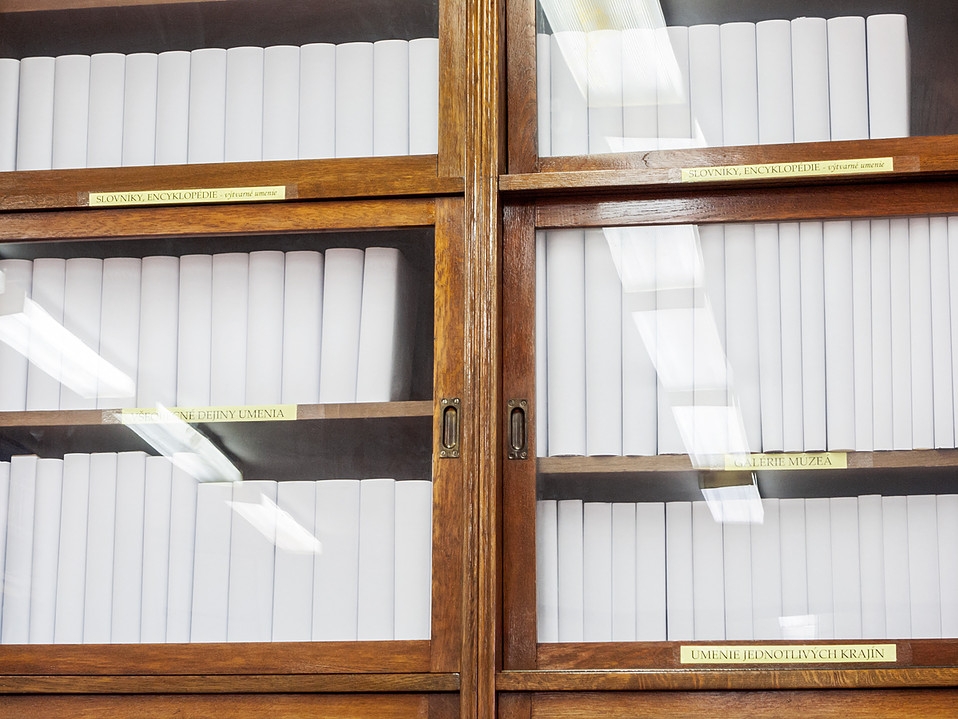
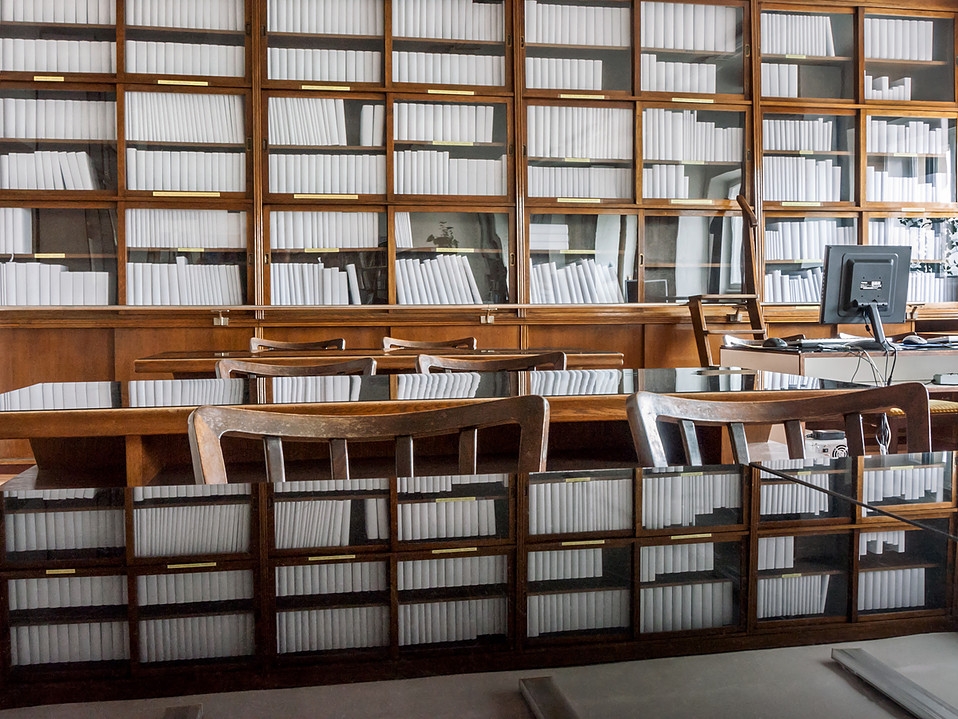
In your artistic practice you very often work with site-specific projects – I think we can understand it as another kind of work that is somewhere between positions of artist and curator. However, in your site specific projects you very often work with the phenomenon of library. Has it got anything to do with the idea of a forgotten knowledge archive that was present already in The Portent of Light?
To make a site specific work is always a very interesting offer when the institution has a space with an unusual history, context, energy, etc. The “ideal” space for art – the white cube – is for me less interesting than some space which is determined by different layers. In October 2018, I will present a site-specific installation in a former synagogue in Šamorín (At Home Gallery). The space holds a lot of meanings itself and adding new meanings reorganizes or restructures the previous order. In fact, in real life this happens with every object, every space, every library. By the constant redefinition of an object, it becomes the subject with its multi-layered identity. I believe it has its own very complex conciseness, which I would like to observe, learn from, and communicate.
My fascination with the library is not based on its aesthetics but more on the function and circulation of knowledge. My position is rather critical than romantic. The first library project was created in 2008 and since then I constantly elaborate this concept and I exhibit different stages of the work. I considered library as a very complex reflection of memory and I was interested in how memory is created and quoted in specific situations. For that, I used library as a medium to point certain gaps. From all library projects, the mostly exhibited one was an interactive library. Its core idea is liberation. I didn’t want to control the result neither I challenged visitors to write something particular. I created a certain modus operandi or let’s call it a “frame.” The work totally depends on public response. It is a site-specific and even more time-specific project. The titles appearing on the spines of the books are written down on wallpaper. I may observe books which turn up and also wonder about those which are missing. People also think about non-existent publications. When I was working on the project in Bratislava, a book describing political affair named “Gorilla“ was suggested. Such a book was published one year later, so it came to be in my library before it was even published. People are very spontaneous in proposing titles, but there is a certain logic behind their spontaneity, an awareness which is difficult to capture. In addition, for me it works well if it works several times in different places. In my opinion it’s getting more serious with the repetition within different cultural contexts, languages, moments of history, crises…
To sum this up we can quote your explanation to Lost Library from 2015: “Library is an abstract space which can be used for the sake of a new imagination.”I think it really corresponds with what you were talking about right now. Not just in Library but also in some other works you use white, clear book spines which open the library for inserting spectator’s impulses. In spite of my association of a library as an archive of knowledge it can also thematize emptiness of an archive that is again and again capitalized this way.
That’s a very good question. We live in the era of capitalism with its syndrome of overproduction of knowledge. Most of the information we approach is produced by reorganization and disorganization of already existing information. Speculative knowledge. That can also have something to do with that library you have mentioned. It reflects the position of information today. The most of the information circulates in digital space, I assume, we lose information faster then we produce it. I am interested in physicality of the knowledge and also its absence.
The most of the information circulates in digital space, I assume, we lose information faster then we produce it. I am interested in physicality of the knowledge and also its absence.
When I worked on a site specific project in city Martin in Slovakia, I visited the national cemetery where most of famous Slovak thinkers and writers are buried. Right next to it I found an estate overgrown with grass and unmarked. The emptiness woke in me a kind of tension as well as curiosity. I tried to find out what the place was – and it was a former Jewish cemetery. In our overfull world you have strange vibes about such an empty space. Emptiness stimulates my mind. How about yours?
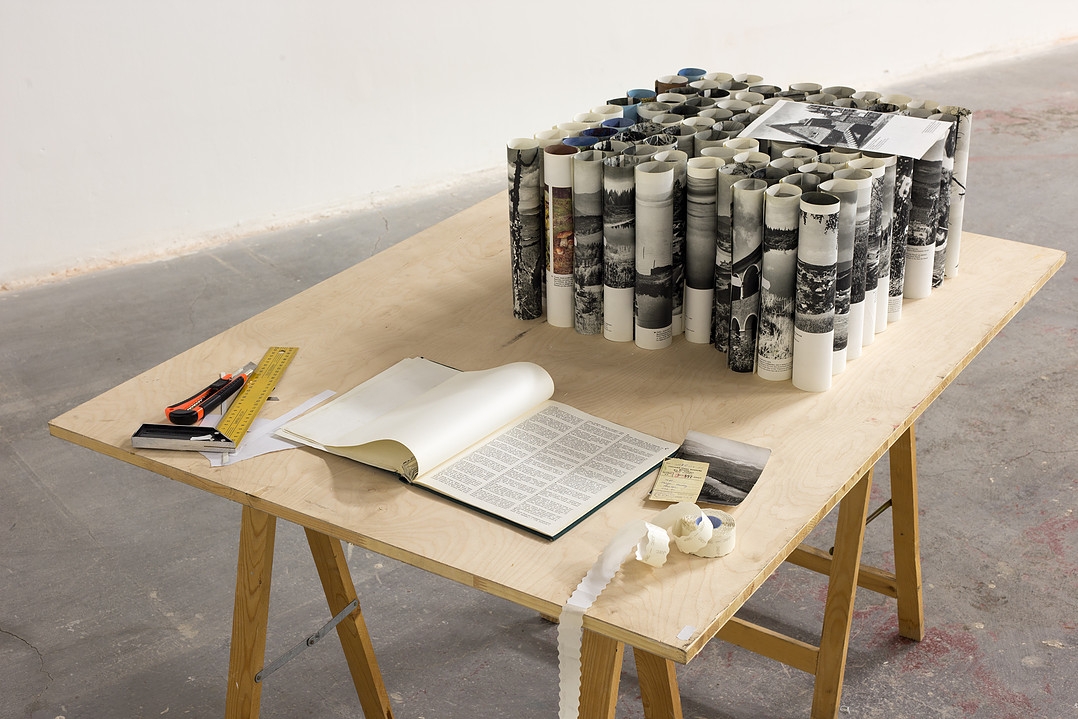
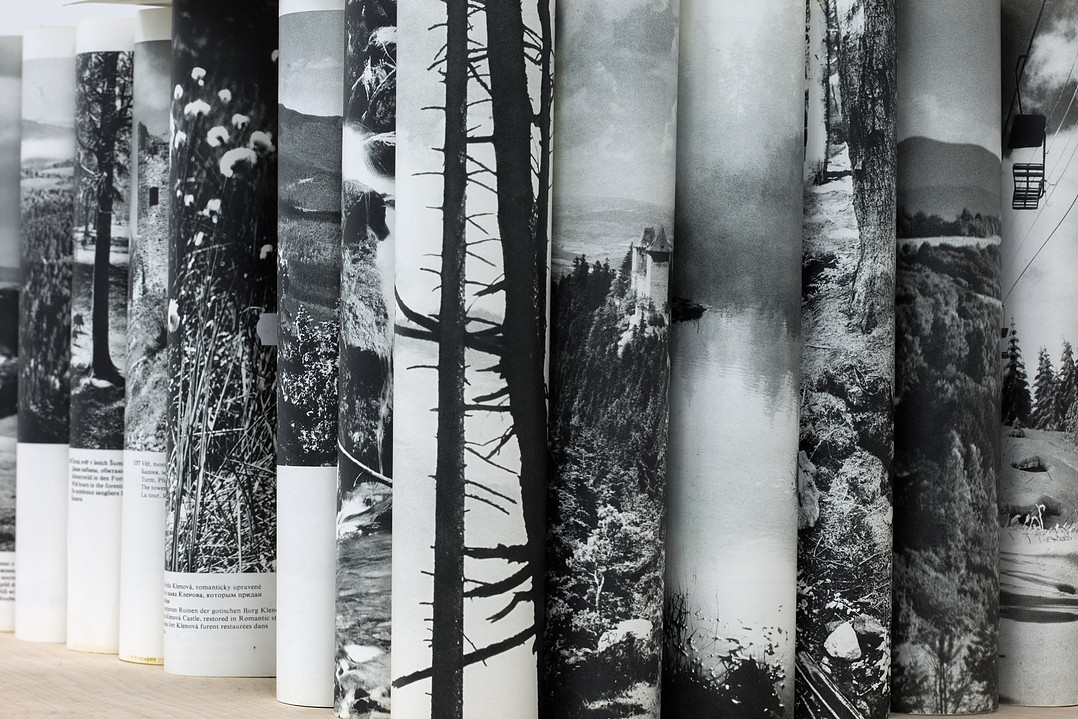
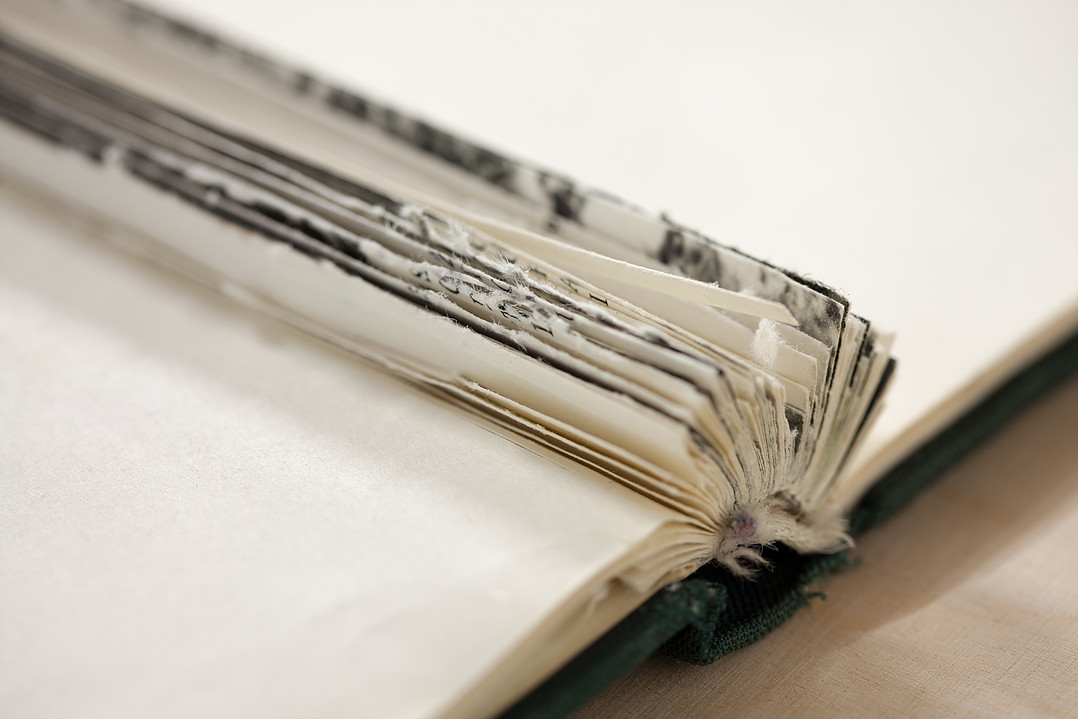
Yes, it makes sense to me when I recollect on the series of your libraries.
There are also many other ways. In my work there are involved not just libraries but also specific books with unique stories. For example, a small green book that was given to my father during his military service in Šumava Mountains, in the border area between Czech Republic, Germany and Austria. As a little child I found this book in our library, I looked at those black and white photographs of the pristine nature again and again and I also started to paint my first pictures on the basis of the photos. I didn’t actually understand the context of the book. It’s interesting how the object changes its relationship to me. Now I understand the book in an absolutely different way. The intact nature could not be crossed. Its purity and beauty was politically determined and it covers many tragic stories. All these lines have got influence on my work – family line, military line, ideological line, the line of my own story. With every new work another layer of that book is discovered. Step by step you enrich it. You study the book from different points of view and new permutations come. I like discovering the same thing over and over again. I don’t always need to find something new but I prefer to take apart what I hold in my hands. I don’t think that art has to reach out for something big. Each small thing can contain so many broad meanings.
Imprint
| Artist | Jaro Varga |
| Index | Birgit Lurz Dorota Kenderová Edit András Galeria HIT Ilona Németh Jaro Varga Kabinet T Lenka Tutschová Lucia Tkáčová Matěj Forejt Meetfactory Olga Stefan Wolfgang Schlag |


